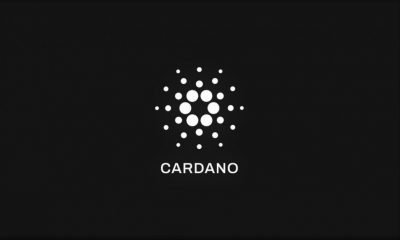Polygon Investor
Investing in Polygon (POL) – Everything You Need to Know

By
Gaurav RoySecurities.io maintains rigorous editorial standards and may receive compensation from reviewed links. We are not a registered investment adviser and this is not investment advice. Please view our affiliate disclosure.
Table Of Contents
What is Polygon?
Polygon, formerly known as Matic, is a framework to build Ethereum-compatible blockchain networks. To describe the features of Polygon, their whitepaper uses a term that perfectly sums up the quality of the project – “Built by Developers, for Developers.” Now, the question is, what problem does Polygon solve? Let's explore the answer.
Originally known as Matic Network, the company rebranded itself as Polygon as the project scope increased. Matic Network was limited to being a simple scaling solution, but Polygon is much more than that. Polygon is an ecosystem of collaborative blockchains that are massively scalable and also retain their self-sovereignty.
What Problem Does Polygon Aim to Solve?
There is no doubt that Ethereum has become a go-to blockchain platform to build blockchain applications. However, some integral issues with the Ethereum blockchain are holding it back from realizing its true potential. The three problems are low throughout, poor user experience because of high gas fees, delays in transactions, and lack of community governance.
To tackle the current challenges of using the Ethereum blockchain, many new projects are exploring the Ethereum-compatible blockchain. There is one more benefit to using the Ethereum-compatible blockchain. It will also allow the developers to access the Ethereum ecosystem. So, there is a solution to the current problems that developers face with the Ethereum blockchain – Create an Ethereum-compatible blockchain. But there was another problem that prevented opting for this solution. Before the launch of Polygon (Previously Matic Network), there was no framework to create an Ethereum-compatible blockchain. Also, no protocol can connect the newly created sidechains with the Ethereum blockchain. That is where Polygon delivers value to the developer community.
Polygon is both a framework and a protocol that a developer can use to create and connect an Ethereum-compatible blockchain. It is also easy to deploy as it offers one-click deployment and offers modules to develop your custom blockchain networks. This feature is very beneficial for the developers. It is also equally easy to exchange messages between the Ethereum blockchain and other networks via Polygon's interoperability protocol. Polygon also offers adaptor modules to enable Interoperability in existing blockchain networks.
History of Polygon
As we said in the beginning, Polygon began as Matic Network, but they rebranded as Polygon as the scale of their project grew. Initially, Matic Network was only a Layer 2 Scaling Solution, but later they became an ecosystem of self-sustaining, collaborative, and interactive Ethereum blockchains.
Launched in October 2017, Polygon was co-founded by Jaynti Kanani, Sandeep Nailwal, and Anurag Arjun. Jaynti Kanani, the CEO of Polygon, is a blockchain engineer and full-stack developer. Before founding Polygon, he was working with Housing.com as a Data Scientist. He began his career as a Senior Software Engineer at Persistent Systems. As for his education, Jaynti has a Bachelor's of Engineering in Information & Technology from Dharmsinh Desai Institute of Technology.
Polygon moved to its network later in 2019, but before that, they were active contributors on the Ethereum network. In fact, Jaynti & his team at Polygon, known as Matic Network, played a key role in implementing Plasma and the WalletConnect protocol on the Ethereum network.
Another co-founder, Sandeep Nailwal, is also a blockchain programmer. He has a Masters in Business Administration in Technology, Finance, and Supply Chain Management from the National Institute of Industrial Engineering. Before he co-founded Polygon, he was working as CEO & Co-founder of Scopeweaver. He has also worked at Welspun Group, Deloitte, and Computer Sciences Corporation.
The third co-founder of Polygon is Anurag Arjun, who is currently working as Chief Product Officer. He has a Bachelor's degree in Computer Engineering from Nirma Institute of Technology. Before co-founding Polygon, he was at IRIS Business Services Limited as AVP Product Management. Anurag has also worked with Cognizant, Dexter Consultancy Private Limited, and SNL Financial.
How Does Polygon Work?
To understand how Polygon works, we must view it as a four-layer architecture or system where the first layer is the Ethereum layer. The next layer is the security layer, the third is the Polygon networks layer, and the last is the execution layer. Every layer here plays a different role in how Ethereum works. The first two layers – the Ethereum layer & security layer, are optional.
The first layer, AKA the Ethereum layer, handles communication with various Polygon chains and is also responsible for transaction finality and staking process. Next comes the security layer, which runs next to the Ethereum layer offering “validators as a service.” It also acts as an additional security layer.
The network layers handle block production, local consensus, and collating transactions. It consists of many independent blockchain networks, and these networks are for its user base and community. The last layer is the Execution layer handles the interpreting and execution of transactions within the blockchains existing in the Polygon network. Execution Layer has two layers within it, the execution environment and execution logic. The Execution environment is a kind of virtual plug-in-play machine implementation. Execution logic, on the other hand, is written in Ethereum smart contracts for Polygon's networks.
Polygon Chains
There are two types of Polygon chains: Stand-alone chains and secured chains. Let's understand a bit more about them.
Stand-alone Chains
As the name suggests, these chains are independent and are responsible for their security. It means that they have their own set of validators, unlike the secured chain of Polygon Chains. Opting for stand-alone chains means your project will benefit from a high degree of independence and flexibility of operations. Stand-alone Chains are more suitable for enterprise projects & large projects having strong communities.
Secured Chains
The secured chains rely on security as a service via fraud or validity proofs for blockchain network validations instead of setting up their validator pool. A project that wishes to opt for secured chains can also use a credible validator pool like the shared security features of Polkadot. With this chain, your project will benefit from better security, but it also means reduced flexibility and autonomy. Secured Chains are more suitable for startups and projects that give more importance to security.
MATIC Tokens
The initial circulating supply of MATIC tokens was 3,230,085,551, and the issuing price was $0.00263. As for the total supply of MATIC tokens, it is 10 billion. Even after Matic Network rebranded into Polygon, they continued with MATIC tokens. They did not make any changes to the supply of it. As for the allocation of MATIC tokens, they allocated 3.80% of their total supply for private sale. Then, they set aside 2.09% of their total supply for seed allocation. Matic Network raised $5 million in BNB through a public sale.
16% of MATIC's total supply was set aside for the team, whereas 4% of its supply was for advisors. A total of 12% of MATIC token supply was for network operations. The foundation's share in the total supply of MATIC tokens is 21.86% of MATIC's entire supply, whereas 23.33% of it is for the Matic ecosystem, now Polygon.
POL 2.0 Upgrade
As of September 4, 2024, the Polygon network officially upgraded its native ‘MATIC' tokens to ‘POL' with a 1:1 exchange rate for existing holders. In public communications, developers behind the upgrade stated,
“POL is an exciting and highly anticipated upgrade, mainly because it further expands the utility of Polygon’s native token to reflect and power the vision of Polygon as an ever-growing network of aggregated blockchains…POL is a hyperproductive token that can be used to provide valuable services to any chain in the Polygon network, including the AggLayer itself.”
For those using the Polygon network, POL now functions as its native gas and staking token.
More information on this transition can be found on the Polygon site, here.
How to Buy Polygon (POL)
Polygon (POL) is currently available for purchase on the following exchanges:
Uphold – This is one of the top exchanges for United States residents that offers a wide range of cryptocurrencies. Germany & Netherlands are prohibited.
Uphold Disclaimer: Terms Apply. Cryptoassets are highly volatile. Your capital is at risk. Don’t invest unless you’re prepared to lose all the money you invest. This is a high-risk investment, and you should not expect to be protected if something goes wrong.
Coinbase – A publicly traded exchange listed on the NASDAQ. Coinbase accepts residents from 100+ countries, including Australia, Canada, France, Germany, Netherlands, Singapore, the United Kingdom, and the United States (excluding Hawaii).
Kraken – Founded in 2011, Kraken is one of the most trusted names in the industry and offers trading access to over 190 countries, including Australia, Canada, Europe, and the United States (excluding Maine, New York, and Washington state).
Kraken Disclaimer: Not investment advice. Crypto trading involves risk of loss. Payward European Solutions Limited t/a Kraken is authorised by the Central Bank of Ireland.
Polygon – The Solution to the Woes of Decentralized Application
The global financial industry is getting a reboot of sorts from DeFi and the cryptocurrency industry as a whole. However, some bottlenecks are preventing the crypto industry from realizing its true potential. The main culprits here are the high gas fees and slow transaction speed, as these issues are responsible for a bad user experience. So, why is it crucial to find a solution to these problems? If we don't solve these problems, there won't be meaningful growth in terms of DeFi & crypto adoption rate. To increase the adoption rate of both decentralized applications and cryptocurrencies, the user experience must be improved.
Polygon aims to solve both these problems by tackling high gas fees and slow transactions. Solving these challenges is equal to winning half the game. So far, Polygon has played all its cards right and is seeing tremendous response from the crypto industry. It has also secured investment from Mark Cuban, one of the biggest proponents of cryptocurrencies, which shows its high upside potential. After all, Polygon has proven time that it, indeed, is “Ethereum's Internet of Blockchain.”
Gaurav started trading cryptocurrencies in 2017 and has fallen in love with the crypto space ever since. His interest in everything crypto turned him into a writer specializing in cryptocurrencies and blockchain. Soon he found himself working with crypto companies and media outlets. He is also a big-time Batman fan.
You may like


How to Buy Polygon | Buy POL in 4 Steps (June 2025)


Investing In Avalanche (AVAX) – Everything You Need to Know


Investing in Hedera Hashgraph (HBAR) – Everything You Need to Know


Investing In Render Token (RENDER) – Everything You Need to Know


Investing In Solana (SOL) – Everything You Need to Know


Investing In Cardano (ADA) – Everything You Need to Know